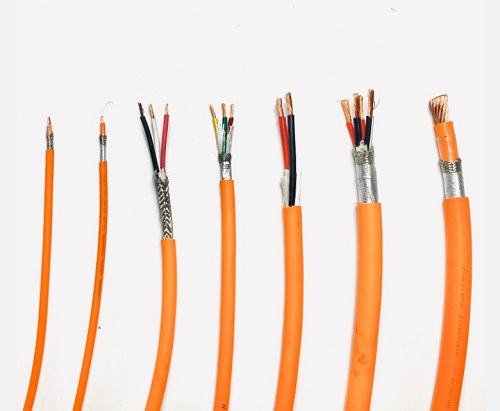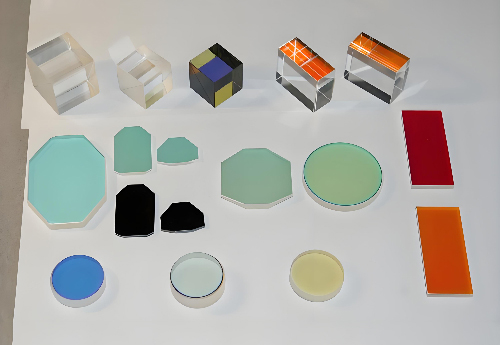Positive or Negative? A Beginner's Guide to Thermocouple Wire Identification
Thermocouples are essential tools for measuring temperature, widely used in industries like manufacturing, food processing, and aerospace. They work by converting heat into electrical energy using two different metals joined at one end. To ensure accurate temperature readings, it’s crucial to correctly identify the positive and negative thermocouple wires. While many sources focus on color coding, a more reliable way to identify thermocouple wires is by examining their physical properties: softness or hardness, weight, and magnetism. This guide will help you confidently identify thermocouple wires using these characteristics, even if color codes are unclear or faded.

What are the positive and negative on thermocouple wire?
First, it's important to familiarize yourself with the different types of thermocouples. Each type is designated by a letter (e.g., K, J, T, E) and has specific applications based on its temperature range and sensitivity. The most common types are:
Type K: Nickel-Chromium / Nickel-Alumel
Type T: Copper / Constantan
Type E: Nickel-Chromium / Constantan
| Thermocouple Type | Hardness | Weight | Magnetism |
|---|---|---|---|
| K-type (Nickel-Chromium / Nickel-Silicon) | Relatively hard, rigid | Lighter than copper-based types | Non-magnetic |
| J-type (Iron / Copper-Nickel) | Hard positive wire (iron), softer negative wire (copper-nickel) | Slightly heavier due to iron content | Magnetic (positive wire) |
| T-type (Copper / Copper-Nickel) | Soft and flexible, easy to bend | Heavier due to copper | Non-magnetic (copper), weak magnetism in copper-nickel |
| N-type (Nickel-Chromium-Silicon / Nickel-Silicon) | Hard and rigid | Lighter, similar to K-type | Non-magnetic |
While traditional guides might focus on identifying thermocouples by color coding, color is not always a reliable indicator due to fading or standards differing across countries. Instead, a more dependable method is to focus on physical properties such as softness/hardness, weight, and magnetism. These traits can help you confidently identify thermocouple wires regardless of their external appearance.
1. Softness and Hardness
Thermocouple wire materials vary in softness and hardness based on their composition. This characteristic can help you distinguish between different types of thermocouples:
- K-type (Nickel-Chromium / Nickel-Silicon): K-type wires tend to be harder, particularly the positive nickel-chromium wire, which offers more rigidity.
- J-type (Iron / Copper-Nickel): The positive iron wire in J-type thermocouples is relatively hard, whereas the negative copper-nickel wire is softer and more flexible.
- T-type (Copper / Copper-Nickel): As copper is a softer material, T-type thermocouples are generally more pliable and easier to bend.
- N-type (Nickel-Chromium-Silicon / Nickel-Silicon): Similar to K-type, N-type wires are harder due to their nickel-based alloys, which offer more durability but less flexibility.
Practical Considerations: Softer wires are easier to install but may be more prone to bending or damage. Harder wires, while more difficult to work with, tend to be more durable in harsh environments.
2. Weight
The weight of thermocouple wires is another distinguishing factor. Different metal combinations result in varying wire densities:
- T-type (Copper / Copper-Nickel): Due to copper’s high density, T-type wires tend to be heavier than other thermocouple types.
- K-type and N-type (Nickel-Chromium, Nickel-Silicon): Nickel-based alloys are generally lighter than copper, making K-type and N-type thermocouples relatively lightweight.
- J-type (Iron / Copper-Nickel): Iron is also dense, so J-type thermocouples are slightly heavier than K-type thermocouples.
By weighing the wires, you can infer the material composition, aiding in thermocouple identification.
3. Magnetism
Thermocouple wires can also be differentiated by their magnetic properties. Some materials, like iron, are magnetic, making this a quick and easy method for identification:
- J-type (Iron / Copper-Nickel): The positive iron wire is magnetic, making J-type thermocouples easily identifiable with a magnet.
- K-type and N-type (Nickel-Chromium / Nickel-Silicon): These materials are generally non-magnetic, so K-type and N-type wires won’t attract a magnet.
- T-type (Copper / Copper-Nickel): Copper is non-magnetic, and the copper-nickel alloy has weak magnetic properties, making magnetism an unreliable identifier for T-type wires.
Consult Documentation
Whenever possible, consult the thermocouple's documentation or the manufacturer's guidelines. This is the most reliable way to ensure you're correctly identifying the thermocouple, especially in critical applications.
Best Practices for Thermocouple Use
To ensure accurate temperature measurements, here are some best practices to follow:
Proper Installation: Ensure that the thermocouple is correctly installed, with the positive and negative wires connected to the appropriate terminals.
Regular Calibration: Thermocouples should be calibrated regularly to maintain accuracy.
Avoid Mixing Types: Do not mix wires from different types of thermocouples, as this can lead to inaccurate readings.
Conclusion
Identifying thermocouple wires based on physical properties like softness, hardness, weight, and magnetism offers a reliable alternative to color-coding, which can be inconsistent or degraded over time. By understanding these core characteristics and how they relate to different thermocouple types, you can ensure accurate and reliable temperature measurements in your applications. Remember, in the world of thermocouples, knowing your materials is the key to precision.



